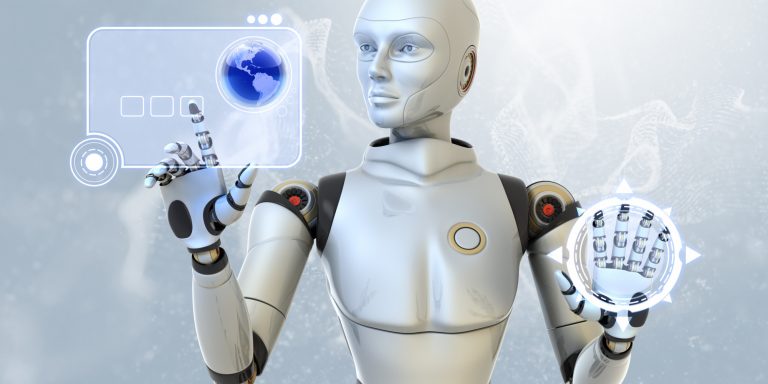
Digitalisation is the process of changing from analog to digital form, also known as digital enablement, It can be also said in another way.
Digitalisation takes an analog process and changes it to a digital form without any different-in-kind changes to the process itself, according to Gartner IT Glossary.
AI Journalism and Digitalisation in Media Definition
Therefore, it means technological transformation of our life, starting from waking up early morning to working, transportation, entertainment, education, social relations, economic activities, thinking, planning, and even into building cities and nations.
- Read also: 10 ways AI Journalism is changing the world
The base technologies that have made all of this possible (e.g. mobile phones, cloud, sensors, analytics, Internet of Things or Artificial Intelligence) also unleash combinatorial effects that accelerate progress exponentially.
This is the context in which digital innovation is now disrupting business and operating models, and making some profound impacts on society.
Effect Digitalisation in Economy
According to the World Economic report, Digitalisation has immense potential, and it could deliver around $100 trillion in value to business and society over the next decade.
- Read also: How could AI Journalism Democratize Info?
There are barriers to its realization – e.g. unfit regulatory frameworks, infrastructure gaps, a lack of public trust in new technologies – but, if stakeholders are incentivized correctly, majority of that value should accrue to society.
The Fourth Industrial Revolution digitizes and integrates processes vertically across the entire organization, from product development and purchasing, through manufacturing, logistics and service.
All data about operation processes, process efficiency and quality management, as well as operations planning are available in real time, supported by augmented reality and optimized in an integrated network.
Horizontal integration stretches beyond the internal operations from suppliers to customers and all key value chain partners. It includes technologies from track and trace devices to real-time integrated planning with execution, according to PWC report.
It also includes digitalisation of product and service offerings, which means the expansion of existing products, e.g. by adding smart sensors or communication devices that can be used with data analytics tools, as well as the creation of new digitized products which focus on completely integrated solutions.
By integrating new methods of data collection and analysis, companies are able to generate data on product use and refine products to meet the increasing needs of end-customers.
Digitalisation is inextricably linked to the societal and economic forces fuelling these conflicting world views.
Digital innovations can For example, drive society towards the UN Sustainable Development Goals, and shore up the three pillars on which they are built: improving quality of life, fostering equitable growth and protecting the environment.
But inhibitors such as inadequate regulation, limited innovation, and uneven adoption of technology all undermine the opportunities that digitalisation presents.
Effects AI Journalism and Digitalisation in Media
Artificial Intelligence journalism will push and accelerate for more global digitization in the media, using the better ways of the Fourth Industrial Revolution and Artificial Intelligence techniques in obtaining the right content, managing and broadcasting media messages in more than one form and by multiple tools and mass communication.
According to the WEF report, the digital transformation of media represents a $1.3 trillion opportunity for industry and society, where changing consumer behavior and expectations are driving the transformation of media.
Three themes are central to addressing these changes and creating industry and societal value.
For example, OTT services such as Netflix and Hulu are revolutionizing media, The proliferation of OTT is a $300 billion opportunity in terms of value to society.
Its advantages include access to cheap unbundled content leading to cost savings; lower emissions due to digital viewership; and wider access to educational resources from open-source platforms, such as YouTube and Coursera.
Collaborations between different OTT players and telecom companies, and clear regulations around net neutrality, can accelerate the development of OTT and OTT 2.0 services.
Artificial Intelligence Journalism will strongly support digital transformation of media, where partnerships and Industrialization technology enables enterprises to collaborate with their audiences, and to fund or co-create innovative content.
- Read also: Artificial Intelligence and Making Films
Digitalisation in AI Journalism, is strongly related of how mass communications will transfer the knowledge of communication process from old version through traditional ways, like TV channels, or printed newspapers and outdoors advertising to the digital way in publishing, broadcasting and reaching out the audience by Numbers, Technologies, Robots, The Internet of Things (IoT) , the 3D Printing, Cloud Computing and Big Data.
Artificial Intelligence journalism and digitalisation in media are two sides of the same coin.










